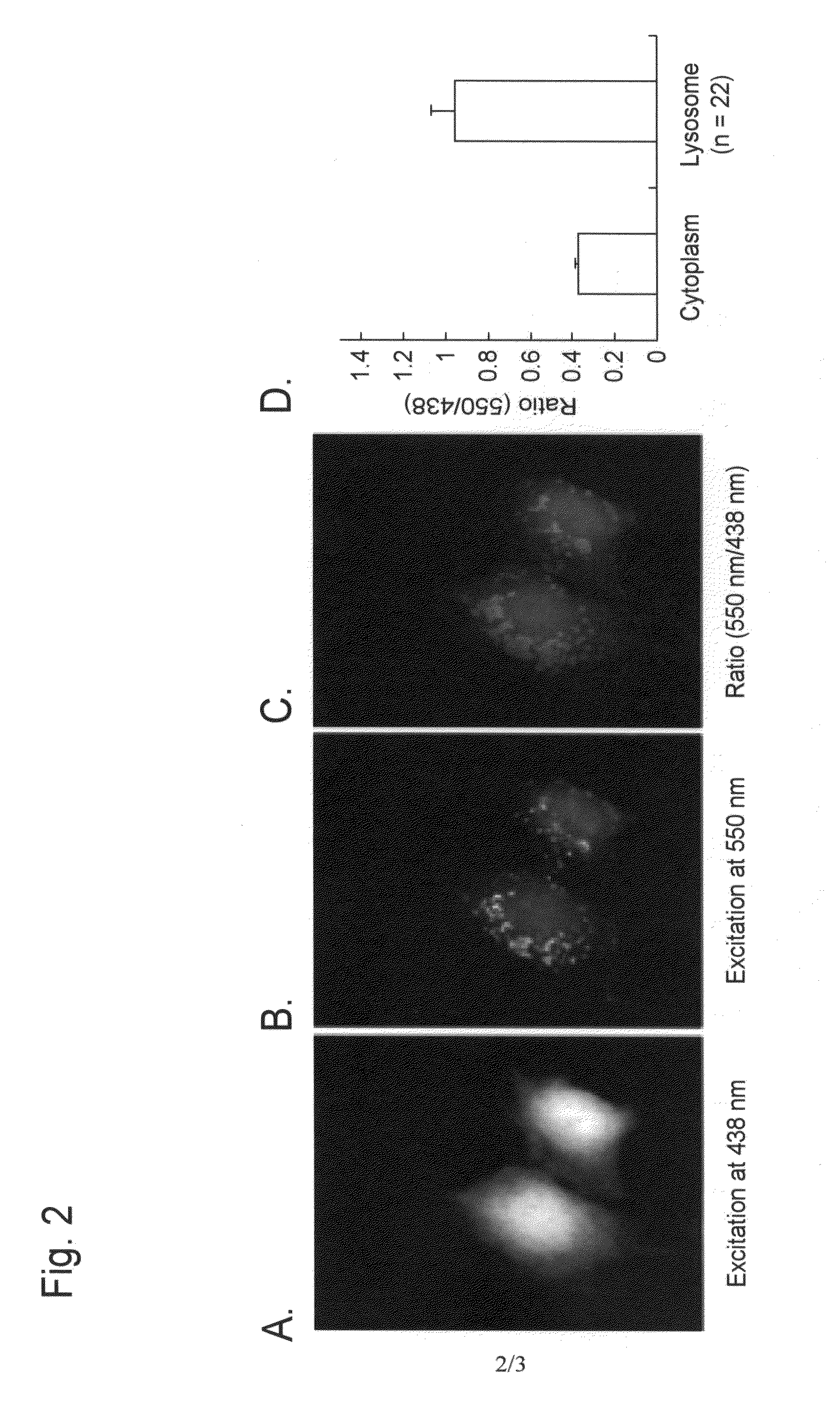Method for measuring autophagy
a technology of autophagy and autophagy, which is applied in the field of autophagy measurement, can solve the problems of insufficient research on the subject, inability to detect microautophagy or chaperone-mediated autophagy by the method, and time-consuming techniques, and achieves accurate identification of small differences in activity levels, great changes in fluorescence intensity ratio, and potent resistance to degradation
- Summary
- Abstract
- Description
- Claims
- Application Information
AI Technical Summary
Benefits of technology
Problems solved by technology
Method used
Image
Examples
example 1
[0094]An example of autophagy measurement with the use of a Montipora sp-derived fluorescent protein (a monomeric protein, mKeima) as a fluorescent probe reagent is described below.
[0095]
[0096]mKeima was purified in the following manner, and pH-dependent spectral properties were studied.
[0097]pRSETB (Invitrogen) into which mKeima cDNA had been inserted (note: cDNA cloning is described in Kogure, T. et al., 2006, Nat. Biotechnol., 24: 577-581) was introduced into the JM109 (DE3) competent cells. The competent cells were applied to an LA plate and cultured at 37° C. overnight. The resulting colonies were transferred to 100 ml LA medium and then subjected to shake culture at 18° C. for 72 hours. The colonies were lysed by means of freezing and thawing, and then the mKeima-containing supernatant obtained after centrifugation was applied to a nickel column (Qiagen) and subjected to elution through the column. In order to remove imidazole used during the above procedure, mKeima was finall...
PUM
| Property | Measurement | Unit |
|---|---|---|
| diameter | aaaaa | aaaaa |
| pH | aaaaa | aaaaa |
| fluorescence wavelength | aaaaa | aaaaa |
Abstract
Description
Claims
Application Information
 Login to View More
Login to View More - R&D
- Intellectual Property
- Life Sciences
- Materials
- Tech Scout
- Unparalleled Data Quality
- Higher Quality Content
- 60% Fewer Hallucinations
Browse by: Latest US Patents, China's latest patents, Technical Efficacy Thesaurus, Application Domain, Technology Topic, Popular Technical Reports.
© 2025 PatSnap. All rights reserved.Legal|Privacy policy|Modern Slavery Act Transparency Statement|Sitemap|About US| Contact US: help@patsnap.com



